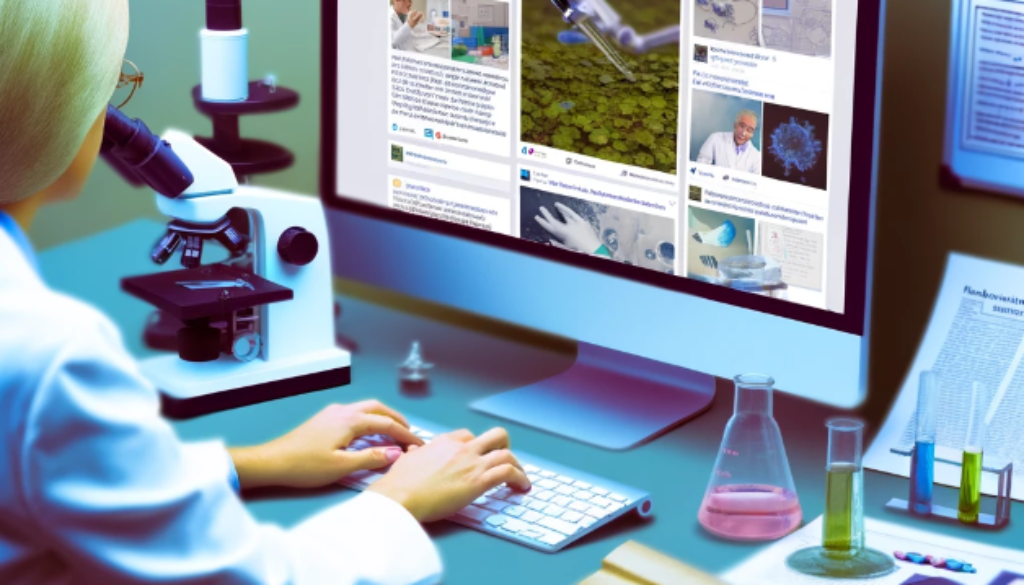“5G ToWeRS TrAnSmiT tHe RoNa VirUs”
Today, with so much information available, it is tough to determine what is true on the internet. Influencers without the appropriate background easily trick their audience into believing false scientific information by simply sounding “sciency” enough. Is it the fault of the users who do not think critically and are led to believe anything they see on social media? Or is it the fault of actual scientists who fail to educate the general public about their findings and their methods to do their measurements?
The lack of science education is certainly not due to the lack of science being done. It is safe to say that, each year, hundreds of thousands of scientific articles describing new technologies and discoveries are published and that’s probably only in the field of medicine! Why, then, do people still believe that 5G radio waves can cause a virus infection? Why are people afraid of a vaccine developed with technologies that are decades old? One reason is that scientific information is not available or exciting to most people outside of STEM, causing people to mistrust scientists and fear the new technologies created.
Where are the people?
For people to start trusting science, scientists must become more open, more public, and more relatable to the average citizen. The easiest way to do that is through social media. Scientists should become more active on social media platforms to showcase their work and make it more relatable to the public.
The best place to reach people is to go where the people are. According to the Pew Research Center, in 2021, 72% of the US adult population has at least one social media account. However, most of the work done by scientists is published in journals that demand a high fee for access. Even experts sometimes have trouble accessing articles. Without an actual need, someone outside of STEM is unlikely to go out of their way to read an academic paper. Instead, scientists could make a small effort to share their work where people are more likely to see it: Twitter, Facebook, TikTok, Youtube, or any other social media platform.
Most Scientists are only writing to other scientists
Now, suppose that people have good access to scientific articles. Even in this case, people would still have difficulty understanding what is written. Scientific language is complete gibberish to the general public! Sometimes it’s even gibberish for us scientists, who read scientific articles every day! However, the generally short format of social media posts forces us to make the information much more digestible, comprehensible, and less scary. Instead of posting a 15-page article discussing the intimidating principles of biomolecular mechanics, I could share a 60-second story on Instagram showing how I prepare microscope slides.
I’m not proposing that we change the way scientists report their findings. After all, all the technical terms and jargon are essential to describe our research fully. People would require a high level of knowledge to fully understand data, and scientists would need incredible vulgarisation skills to present it, assuming that it is possible. Instead, I suggest we start showing how science is done by showcasing our daily lives in the lab or the field. How do our instruments work? What are you trying to measure in your latest experiment? How is your routine structured in the lab? Taking the time to answer such questions on social media should make science more relatable and more enjoyable to people online, igniting people’s curiosity and stimulating their critical thinking.
What do scientists get out of it?
Scientists can also benefit from an increased presence on social media. As the general public learns more about their work and their audience increases, they gain greater trust with the public. This greater trust can serve as leverage to advocate for social justice supported by their research, which is beneficial to the whole population. In addition, the public’s confidence may increase their reputation, which can certainly come with many more advantages, including new funding sources for their research.
It works!
A higher public scientific presence during the COVID-19 pandemic has already restored people’s trust in science. In 2020, an international survey performed by 3M reported a decrease in the number of people saying that they are skeptical of science for the first time in three years! The mistrust in science decreased during the pandemic partly because scientists were forced to do more sci-comm, as governments had to keep people informed. Dr. Anthony Fauci in the United States and Dr. Theresa Tam in Canada are great examples of new familiar faces from science. Plus, many scientists using platforms such as Tiktok and Youtube have increased their audiences since the beginning of the pandemic. Some of my favourite examples are @dillonthebiologist, @lab_shanigans, and @doctor.brein on Instagram. These serve as great motivation for more scientists to get out there and start showing people how science is done and how it is not as scary as many think it is.

